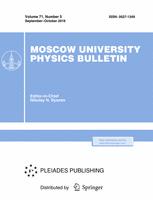Представлены новые экспериментальные данные о влиянии одноосного сжатия до 4 кбар вдоль кристаллографических направлений $[110]$ и $[1\bar10]$ на спектры электролюминесценции и вольт-амперные характеристики диодов на основе гетероструктур $n$-Al$_x$Ga$_{1-x}$As/GaAs$_y$P$_{1-y}$/$p$-Al$_x$Ga$_{1-x}$As (${y=0.84}$), разработанных для инжекционных лазеров. С ростом давления спектры демонстрируют сдвиг в коротковолновую область, достигающий 25 мэВ при 3 кбар, а также рост интенсивности в 2-3 раза. Проведены численные расчеты зонной структуры исследованных гетероструктур при сжатии вдоль оси $[110]$, которые указывают на возрастание эффективной ширины запрещенной зоны в квантовой яме GaAs$_y$P$_{1-y}$ с барическим коэффициентом порядка 8.5 мэВ/кбар и уменьшение высоты барьеров на границах квантовой ямы. Расчеты предсказывают возможность пересечения зон (crossover) легких и тяжелых дырок при давлениях выше 4.5-5 кбар. Возрастание эффективной ширины запрещенной зоны полностью описывает экспериментальные данные о сдвиге спектров электролюминесценции, а смешивание состояний легких и тяжелых дырок при приближении к точке пересечения зон является вероятной причиной роста интенсивности излучения при одноосном сжатии.
78.67.De Quantum wells
73.40.Kp III-V semiconductor-to-semiconductor contacts, p-n junctions, and heterojunctions
Московский государственный университет имени М.В. Ломоносова, физический факультет. Россия, 119991, Москва, Ленинские горы, д. 1, стр. 2
$^1$кафедра физики низких температур и сверхпроводимости
$^2$кафедра физики полупроводников



